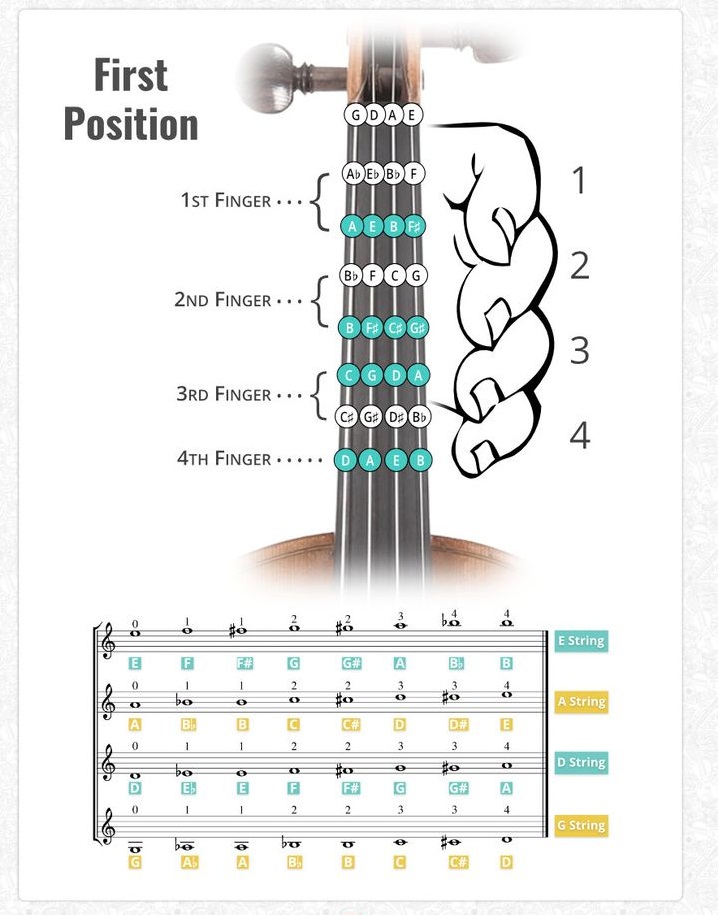Introduction: Learning to play the violin is a rewarding journey that begins with mastering the basics. One of the fundamental aspects of violin technique is understanding and practicing the first position. In this comprehensive guide, we will explore the world of the violin’s first position, offering valuable insights and tips for beginners.
What is the First Position on the Violin? The first position is the foundational playing position for violinists. It is where you’ll start your violin journey and is essential for building a strong technical foundation. In this position, your fingers are placed on the fingerboard, and your thumb rests on the back of the violin’s neck.
Understanding the Fingerboard: The fingerboard is the long, narrow strip of wood that runs along the neck of the violin. It is divided into smaller sections, marked by the placement of the violin’s four strings (G, D, A, and E). In the first position, your fingers will press down on the strings to change the pitch and produce different notes.


Basic Finger Placement: Here are some key points to consider when placing your fingers in the first position:
- Finger Curvature: Keep your fingers slightly curved and relaxed. Avoid pressing the strings too hard, as this can create tension and affect the quality of your sound.
- Finger Numbers: Violinists use a numbering system for the fingers of the left hand. The index finger is 1, the middle finger is 2, the ring finger is 3, and the pinky is 4. This numbering system makes it easier to follow sheet music and finger placement instructions.
- String Placement: Each finger corresponds to a specific string. Your index finger is used on the G string, your middle finger on the D string, your ring finger on the A string, and your pinky on the E string.
Practice Tips: To help you become proficient in the first position, here are some practice tips:
- Use a Mirror: Playing in front of a mirror can help you monitor your finger placement and posture.
- Slow Scales: Practice playing scales slowly to build muscle memory and finger strength.
- Finger Exercises: Incorporate finger exercises into your practice routine to improve finger dexterity and flexibility.
- Consistency: Spend dedicated time each day practicing in the first position. Consistency is key to progress.
Common First Position Fingerings:
- On the G string: 1st finger (index) plays G, 2nd finger (middle) plays A, 3rd finger (ring) plays B, 4th finger (pinky) plays C.
- On the D string: 1st finger plays D, 2nd finger plays E, 3rd finger plays F#, 4th finger plays G.
- On the A string: 1st finger plays A, 2nd finger plays B, 3rd finger plays C#, 4th finger plays D.
- On the E string: 1st finger plays E, 2nd finger plays F#, 3rd finger plays G#, 4th finger plays A.
Mastering the first position on the violin is an important step in your musical journey. It lays the foundation for more advanced techniques and helps you produce beautiful melodies. As a beginner, it’s essential to practice diligently, maintain proper finger curvature, and focus on finger placement. With patience and dedication, you’ll develop a strong foundation in the first position and set yourself on the path to becoming a skilled violinist.


AM INTERESTED